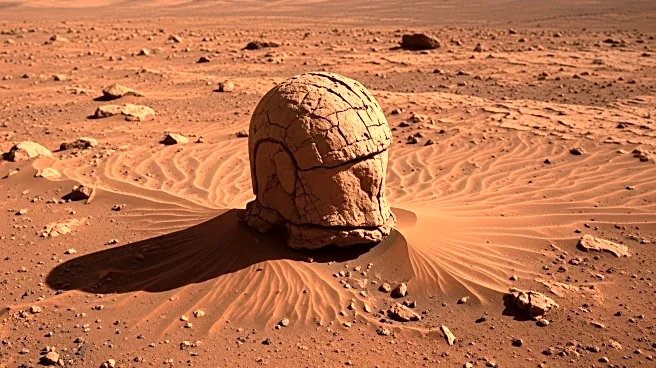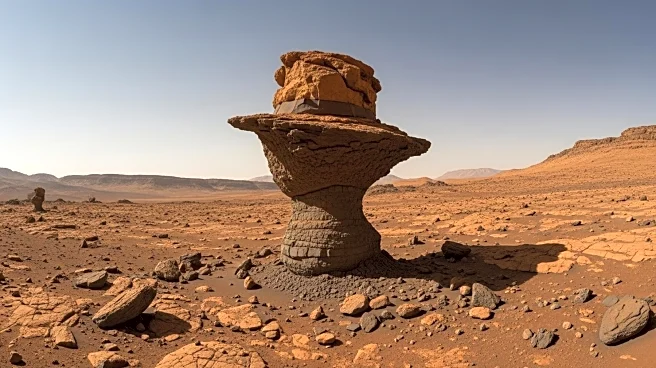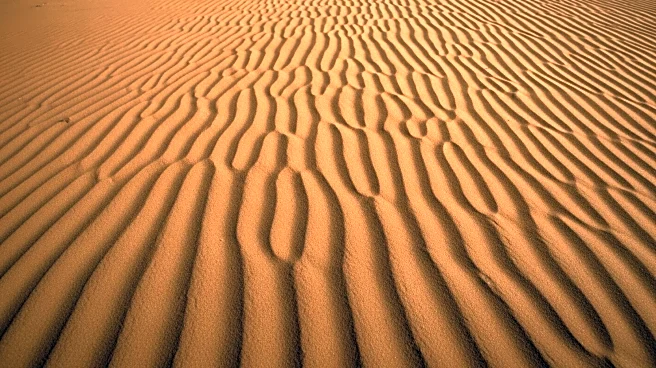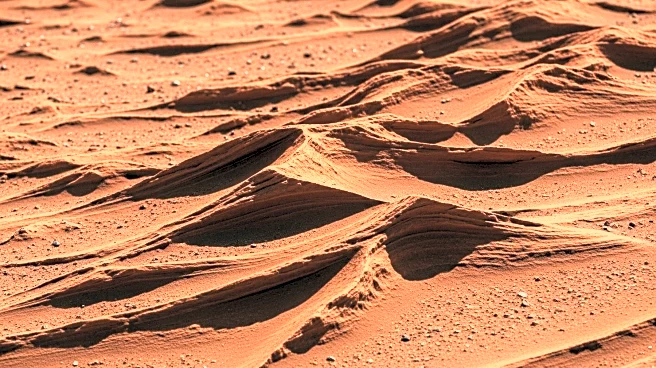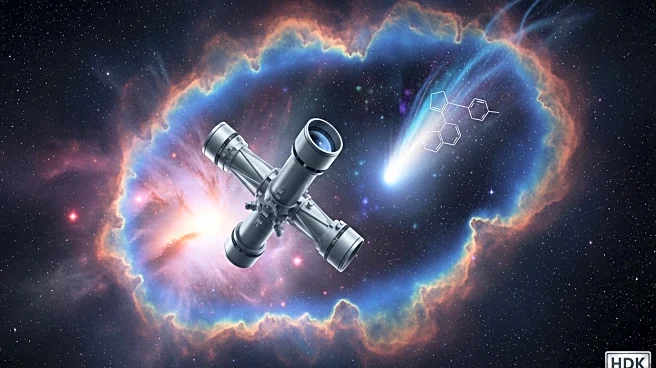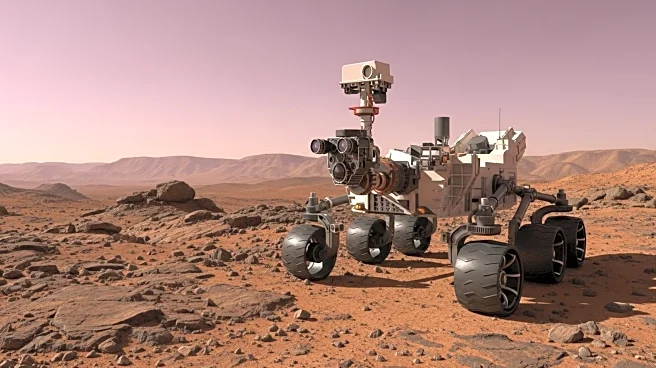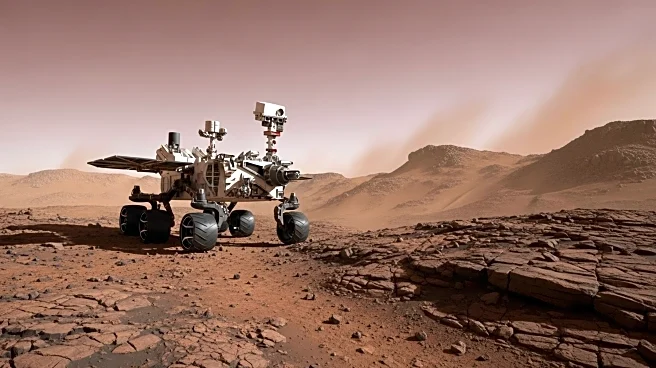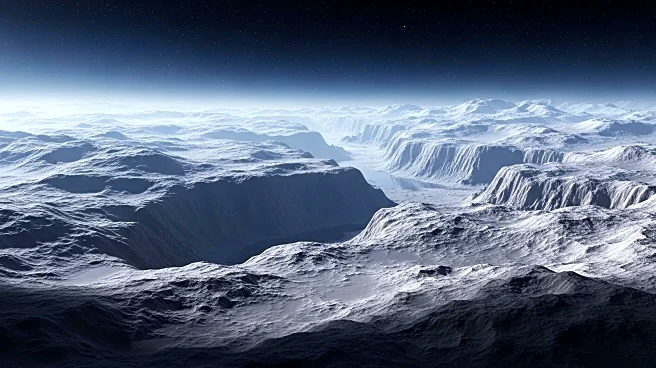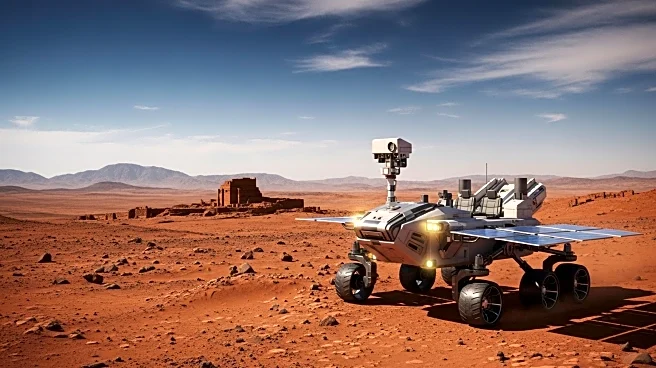What's Happening?
NASA's Perseverance Mars rover has discovered a unique helmet-shaped rock, named Horneflya, composed almost entirely of spherules. This discovery highlights the ongoing influence of wind on Mars' surface. The rover is currently studying sand ripples to understand how winds shape the planet's surface. This exploration is part of a broader effort to unravel Mars' geological history and its current environmental processes. The rover's instruments, including SuperCam and Mastcam-Z, are used to analyze the size and chemistry of sand grains and crusts, which may provide insights into the planet's surface dynamics.
Why It's Important?
The findings from Perseverance could significantly enhance our understanding of Mars' current environmental conditions, which is crucial for future manned missions. By documenting wind and water's impact on the Martian surface, scientists can better prepare terrain maps for astronauts. This knowledge may also aid in identifying resources within Martian soils, potentially supporting human survival on the planet. The rover's observations serve as a practice run for more comprehensive studies, paving the way for future exploration and resource utilization on Mars.
What's Next?
The Perseverance team plans to continue its exploration along the rover's route, aiming to reach a larger field of Martian rocks at Lac de Charmes. This future campaign will build on the current findings, offering a more detailed understanding of Mars' surface processes. The ongoing research will contribute to the preparation for human exploration, ensuring astronauts have the necessary information to navigate and utilize the Martian environment effectively.
